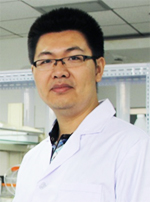主要成就
获奖情况
2014年,荣获中国科学院“卢嘉锡青年人才奖”
2014年,荣获中国科学院卓越青年科学家项目资助
2015年,入选中国科学院青年创新促进会会员
2016年,荣获国家自然科学基金委“优秀青年科学基金项目”资助
2016年,荣获首届“中源协和生命医学创新突破奖”
2016年,荣获中国生命科学领域十大进展奖
2017年,所参与完成的“禽流感病毒感染人的生态与分子机制研究”项目荣获2017年中华预防医学会科学技术奖一等奖
学术兼职
中国免疫学学会青年工作委员会委员
中国微生物学会病毒学专业委员会青年委员会委员
北京免疫学会常务理事
中国研究型医院学会空间微生物学与感染专业委员会常务委员
中国研究型医院学会空间微生物学与感染专业委员会青年委员会副主任委员
北京生物化学与分子生物学会第二届青年委员会委员
代表性论文
Shi* Y, Gao* GF. 2017. Structural biology of the Zika virus. Trends in Biochemical Sciences, 42(6): 443–456
Yuan Y#, Cao D#, Zhang Y#, Ma J#, Qi J, Wang Q, Lu G, Wu Y, Yan J, Shi* Y, Zhang*X, Gao* GF. 2017. Cryo-EM structures of MERS-CoV and SARS-CoV spike glycoproteins reveal the dynamic receptor binding domains. Nature Communications. 8:15092.
Duan W#, Song H#, Wang H, Chai Y, Su C, Qi J, Shi* Y, Gao* GF. 2017. The crystal structure of Zika virus NS5 reveals conserved drug targets. The EMBO Journal 36: 919–933.
Shi Y, Ai Kawana-Tachikawa, Gao F, Qi J, Liu C, Gao J, Cheng H, Ueno T, Iwamoto A, Gao* GF. 2017. Conserved Vδ1 Binding Geometry in a Setting of Locus-Disparate pHLA Recognition by δ/αβ T Cell Receptors (TCRs): Insight into Recognition of HIV Peptides by TCRs. Journal of Virology. 91(17): e00725-17.
Han X, Qi J, Song H, Wang Q, Zhang Y, Wu Y, Lu G, Kwok-Yung Yuen, Shi* Y, Gao* GF. 2017. Structure of the S1 subunit C-terminal domain from bat-derived coronavirus HKU5 spike protein. Virology. 507:101-109.
Wang H#, Shi Y#, Song J#, Qi J#, Lu G, Yan J, Gao* GF. 2016. Ebola viral glycoprotein bound to its endosomal receptor Niemann-Pick C1. Cell 164(1-2):258-68.
Shi* Y, Wu Y, Zhang W, Qi J, Gao* GF. 2014. Enabling the 'host jump': structural determinants of receptor-binding specificity in influenza A viruses. Nature Reviews Microbiology 12:822-31.
Sun X#, Fujiwara M#, Shi Y#, Kuse N, Gatanaga H, Appay V, Gao GF, Oka S, Takiguchi* M. 2014. Superimposed epitopes restricted by the same HLA molecule drive distinct HIV-specific CD8+ T cell repertoires. Journal of Immunology 193(1):77-84.
Shi Y#, Zhang W#, Wang F#, Qi J#, Wu Y#, Song H, Gao F, Bi Y, Zhang Y, Fan Z, Qin C, Sun H, Liu J, Haywood J, Liu W, Gong W, Wang D, Shu Y, Wang Y, Yan J, Gao* GF. 2013. Structures and Receptor Binding of Hemagglutinins from Human-Infecting H7N9 Influenza Viruses. Science 342:243-247
Zhang W#, Shi Y#, Lu X, Shu Y, Qi J, Gao* GF. 2013. An airborne transmissible avian influenza H5 hemagglutinin seen at the atomic level. Science 340:1463-1467.
Liu D, Shi W, Shi Y, Wang D, Xiao H, Li W, Bi Y, Wu Y, Li X, Yan J, Liu W, Zhao G, Yang W, Wang Y, Ma J, Shu* Y, Lei* F, Gao* GF. 2013. Origin and diversity of novel avian influenza A H7N9 viruses causing human infection: phylogenetic, structural, and coalescent analyses. Lancet 381:1926-1932.
Sun X#, Shi Y#, Lu X, He J, Gao F, Yan J, Qi J, Gao* GF. 2013. Bat-derived influenza hemagglutinin H17 does not bind canonical avian or human receptors and most likely uses a unique entry mechanism. Cell Reports 3:769-778.
Zhang W#, Shi Y#, Qi J, Gao F, Li Q, Fan Z, Yan J, Gao* GF. 2013. Molecular basis of the receptor binding specificity switch of the hemagglutinins from both the 1918 and 2009 pandemic influenza A viruses by a D225G substitution. Journal of Virology 87:5949-5958.
Shi Y, Qi J, Iwamoto A, Gao* GF. 2011. Plasticity of human CD8alphaalpha binding to peptide-HLA-A*2402. Molecular Immunology, 48(15-16): 2198-2202.
